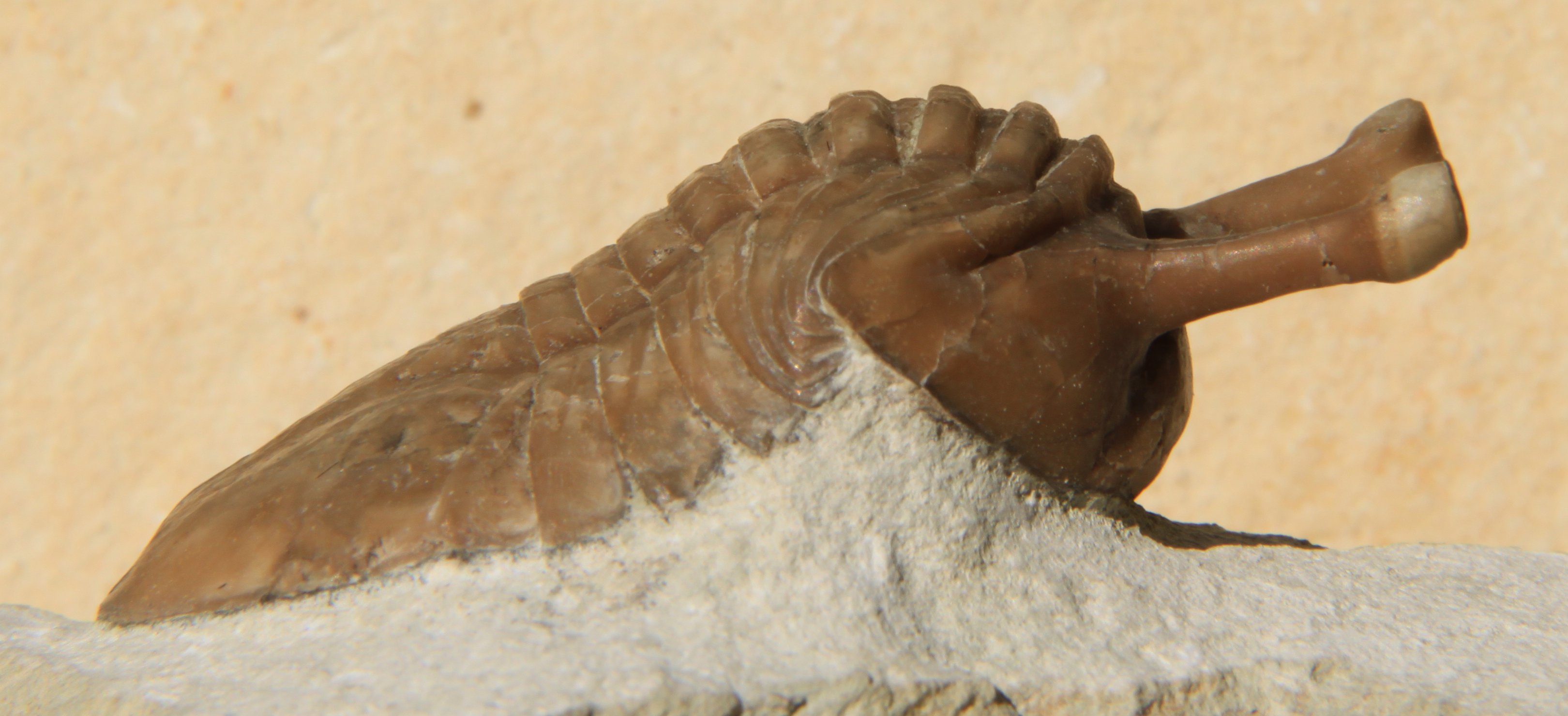|
Asaphida Genera
Asaphida is a large, morphologically diverse order of trilobites found in marine strata dated from the Middle Cambrian until their extinction during the Silurian. Asaphida contains six superfamilies (Anomocaroidea, Asaphoidea, Cyclopygoidea, Dikelocephaloidea, Remopleuridoidea and Trinucleioidea), but no suborders. Asaphids comprise some 20% of described fossil trilobites. In 2020, the superfamily Trinucleioidea was proposed to be raised to an order ( Trinucleida) and removed from Asaphida. Morphology The Asaphids generally have cephalon (head) and pygidium (tail) parts similar in size, and most species have a prominent median ventral suture. Heads are often flat, and carapace furrows in the head area are often faint or not visible. Thoracic segments typically number 5 - 12, though some species have as few as two and some as many as 30. They also generally have a wide doublure, or rim, that surrounds the cephalon. This causes some specimens to be described as having a charact ... [...More Info...] [...Related Items...] OR: [Wikipedia] [Google] [Baidu] |
Asaphus Lepidurus
''Asaphus'' () is a genus of trilobites that is known from the Lower (upper Arenig) and Middle Ordovician of northwestern Europe (Sweden, Estonia, Saint Petersburg Area). Etymology The generic name is derived from the Greek word ''asaphes'', meaning "indistinct." Description The headshield (or Trilobite#Cephalon, cephalon) and tailshield (or Trilobite#Pygidium, pygidium) are semicircular and without a border (defined by a furrow or a change in convexity parallel to its margin). The cephalon is of approximately equal size as the pygidium (or Pygidium#Trilobites, isopygous). The central raised area of the cephalon (or Trilobite#Cephalon, glabella) is long, reaching the frontal margin. It may have faint lateral glabellar furrows or be smooth, and sometimes an inconspicuous tubercle is present just in front of the hardly discernible occipital ring. The natural fracture lines (sutures) of the head run along the top edges of the compound eye. From the back of the eye these cut t ... [...More Info...] [...Related Items...] OR: [Wikipedia] [Google] [Baidu] |
